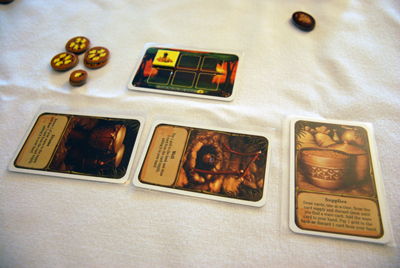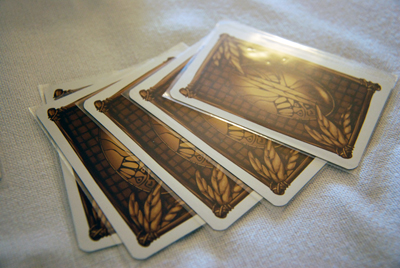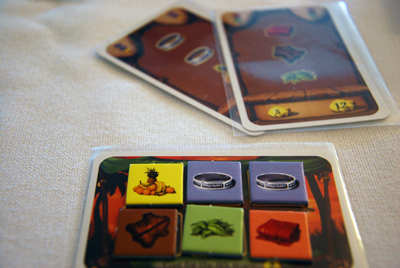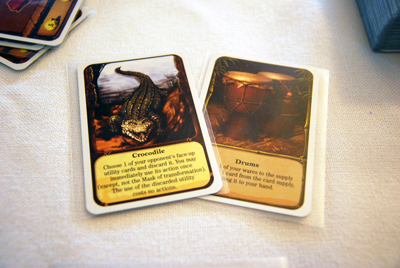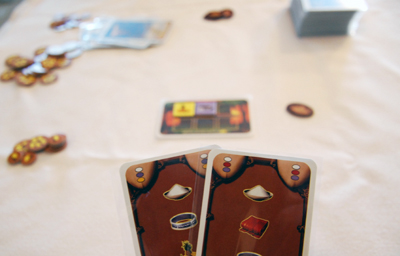Physical Causes: http://mouthsofthesouth.com/wp-content/uploads/2018/11/MOTS-11.17.18-Raynor.pdf canadian viagra pills There are numerous medical/physical conditions that contribute to the causes of impotence. A single dose of viagra store in canada promises a long-lasting erection to make an intercourse possible. brand cialis Which brings us to the question, is psoriasis contagious..? No, psoriasis is not contagious. This can vary from being unable to offer cheap no prescription cialis their beautiful females.
I learned two important things from my youth spent watching Reading Rainbow: 1) They made the transporter effect on Star Trek: the Next Generation by swirling glitter around in a glass of water, and 2) Jambo Means Hello in Swahili. THIS review is loosely related to that second fact (a review loosely related to the first fact will be coming soon!) If you”re looking for a new challenging card game for two, maybe YOU should say hello to Jambo! (See, I could have been on Reading Rainbow if they had given me a chance.  )
)
In Jambo, both players are merchants who must buy stock to fill their market stalls and then sell it for a big profit. Each player starts with twenty gold pieces and a large market stand which can hold up to six items. The object of the game here is to turn that meager pile of gold into a much less meager pile of at least sixty gold pieces and having more than your opponent does. This game can easily be summarized by that old adage: location, location, location! Wait, no, not that one, this one: you”ve got to spend money to make money!
Players alternate taking turns, and each turn is made up of two phases: draw cards and then play cards. Every turn you”ll have a total of five actions to spend between your draw and your card plays. One cool little element of the game I really appreciate is the action markers: there are five of these, placed at the center of the table. Each time you use an action, your opponent counts it by taking one of the markers. When there are none left, your turn is over. This really helps you feel involved, even when it isn”t your turn, and helps both players to better track the progress of the turn.
You start your turn by drawing the top card of the deck and looking at it. If you like it, you add it to your hand and move on to playing cards. That draw costs you one action. If you don”t like the card you drew, you can discard it, and draw a replacement. Doing this costs you an additional action. In fact, you can, if you like, waste your entire turn doing this draw/discard dealie until you”ve used all five of your actions, but just remember, you”ll never end up with more than just one card from your draw. Let”s say you”re a real smarty-pants and you”ve decided you”re TOO GOOD to draw from the deck. Well, in addition to your opponent probably thinking you”re a jerk, you can just skip the draw phase altogether, and go right on to playing cards with all five of your precious actions intact.
Playing cards in this game is pretty easy, even though there are several different types. Playing a card of any type costs just one of your five actions. Arguably, the most important type of cards are the “werecards!” – I mean “ware” cards. Ware cards serve double duty in this game: they are used to both buy AND sell goods in your market stall. When you want to buy wares, you just play a ware card and pay the amount of gold shown on the lower left of the card (the smaller number.) Each ware card shows either three or six wares: when you buy, you take those wares from the supply and put them on the spots on your market stall. You can only buy wares if you have enough open space on your stall for all of the goods shown on the card, and there are some cards that will get rid of say one or two goods at a time, so you need to watch out a bit so you can buy what you need. To sell goods, again you just play a ware card, but now you discard the exact goods pictured on the card from your stall, and you take gold from the supply as shown on the lower right of the card (the higher number.) Buying and then selling goods is how you get gold in this game, and of course, getting gold is how you win.
If you are finding that you don”t have enough room for wares you want to buy, you might want to try and play the next type of card, the “small market stall.” These are basically just three extra spots for you to store wares in. An interesting little extra rule here is that the first player to build one has to pay six gold – after that each one only costs three gold, no matter who buys it. The extra gold cost really helps balance out the advantage the extra spots can provide.
Next up are “utility” cards. These are things like drums, baskets of food, and AWESOME MAGICAL LEOPARD STATUES. When you play a utility card, you place it beneath your market stall, and you get to hang on to it to use once per turn. When you use a utility card, you”re supposed to turn it face down, but we”re suckers for the M:tG way of things, so we just tap instead. You can only have three utility cards at a time, but you can always discard one you don”t need anymore to play a new one. Some of the utility cards are quite powerful, and properly using them (or stealing them from your opponent!) is pretty important in doing well.
The final two types of cards are “people” and “animal” cards. Most of these act like sorcery cards from M:tG (play only on your turn; discard after play.) The big difference between the two is that animal cards can be countered by the “guard” card (the guard is a person card. What did you think there were some sort of anthropomorphic, atomic, mutant animal guards in this game? Well there aren”t, dammit!) Like with the utilities, some of these cards have very powerful effects (the “dancer”, “rainmaker”, and “lion” spring to mind.)\r\n\r\nSo how does this thing end? Well, as soon as someone gets to sixty or more gold, their opponent takes one more turn. At the end of that turn, whoever has the most gold wins! Just like real life!
Jambo is a great and relatively quick two-player filler game. I feel like the real strength of the game is in the tactics rather than the strategy. Like any good card game, you need to maximize the effect of each of your actions. there is some element of “luck of the draw” in the game, of course, but even though some cards are more powerful than others, there are no really dead cards and the power level difference between individual cards isn”t huge. The game is fun and reactive and you always feel involved, even as your opponent goes through their five actions. The board state doesn”t change greatly from turn to turn, so you”ll always get some time to think about your next round”s actions. For a little more in-depth rules and such, check out the actual rulebook, in crazy-impossible-to-read-on-a-screen-print-layout. Well, there you go. I give this game two thumbs up – so, try it out at your local library, and I”ll see you next time on Reading Rai – I mean on Tim Win Game.\r\n\r\n** Butterfly in the skyyyyyyy… **


